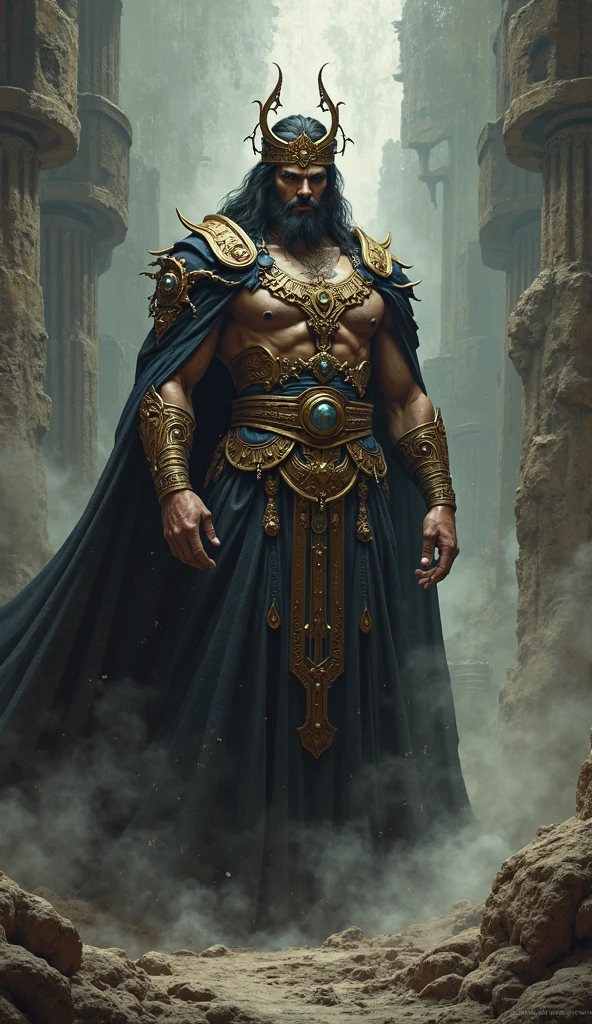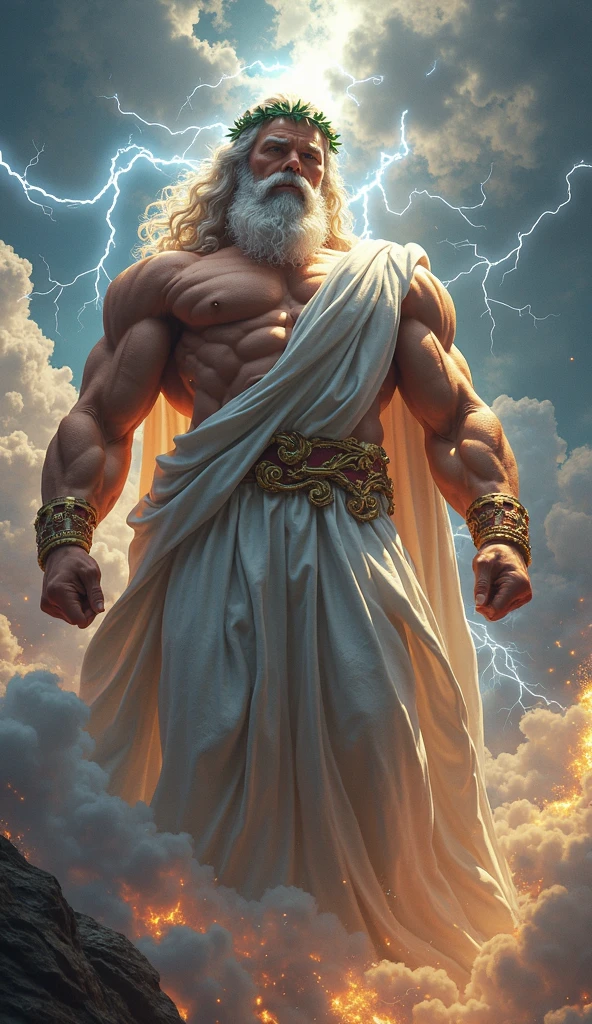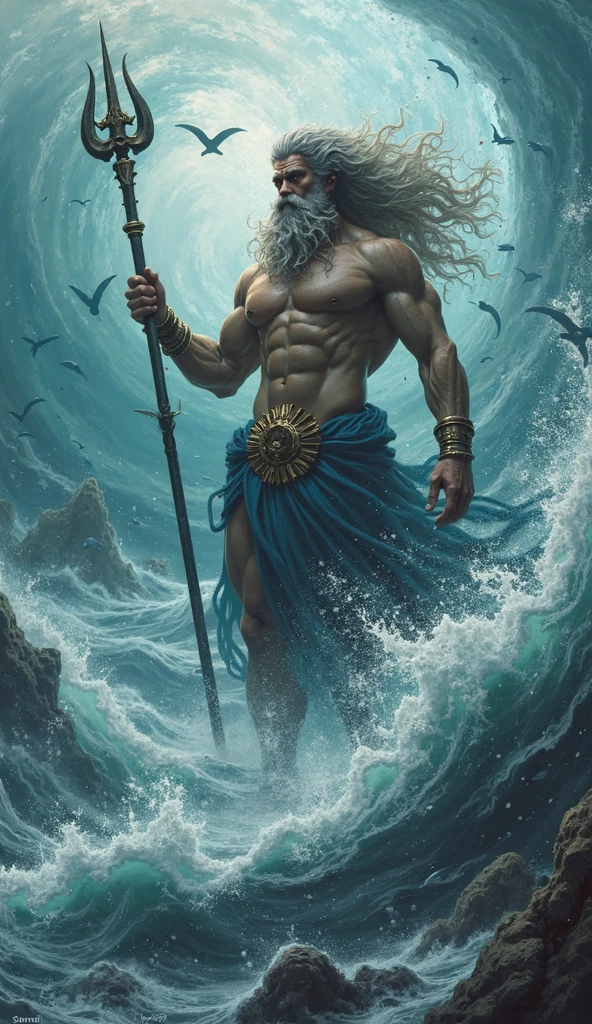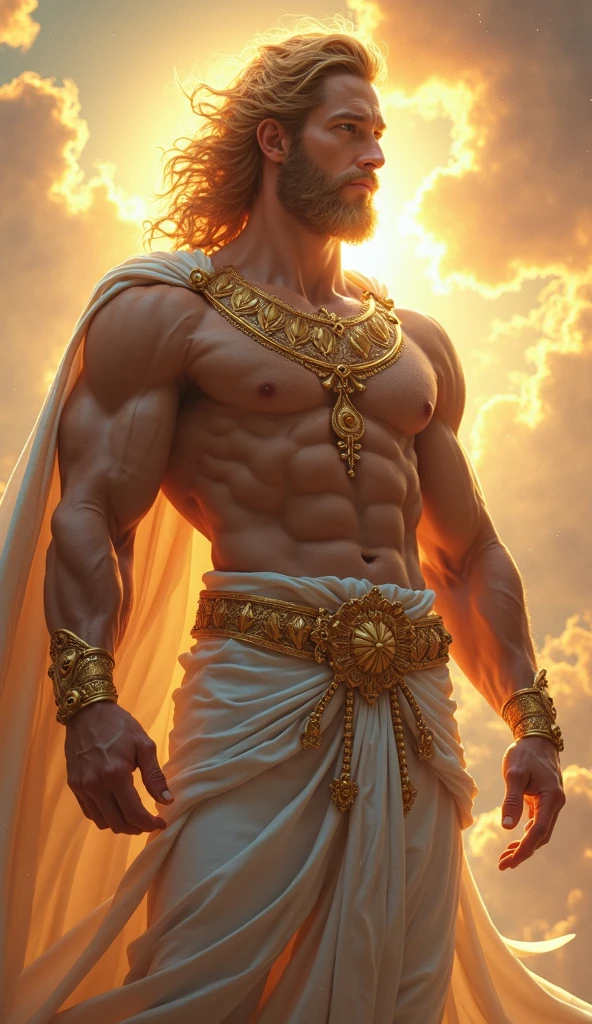SETH – Egyptian God of Chaos, Storms, Desert Sovereignty, and Primordial Power
1. Cosmic Genealogy: Geb, Nut, and the Ennead of Heliopolis – How Seth Was Born to Shake the World
Seth (also Set, Sutekh, Setesh, Setekh, Suty) is the fourth child of Geb (the primordial earth) and Nut (the star-spangled sky). His siblings—Osiris, Isis, and Nephthys—form the core Osiris myth cycle, while he himself is the disruptive hinge upon which that cycle turns. Ancient hymns call him “Son of Nut, Seed of Storm”, emphasizing his meteoric birth amid thunderous night. Unlike the harmonious unions of other gods, his conception is framed as a cosmic upheaval: Geb and Nut’s embrace had to be ripped apart by the air-god Shu, foreshadowing Seth’s lifelong role as separator of order and chaos.
2. Etymology and Semantic Range: From “Striker” to “Red One”
The root “stḥ” in Middle Egyptian yields meanings as diverse as “to strike,” “to dazzle,” “to confuse,” and “to inundate.”
-
“Sutekh” in Nubian dialects translates to “Lord of Foreign Lands.”
-
“Setesh” in Libyan Berber means “Desert Wind.”
-
“Typhon”, the later Greek overlay, carries “smoke” or “storm-breath”, aligning Seth with volcanic chaos.
Thus, every linguistic layer amplifies his volatility.
3. Iconographic Arsenal: The Seth-animal, Saluki Hounds, and Red Crown Symbolism
3.1 The Seth-animal: Cryptozoology of Divine Chaos
The canonical Seth-animal—a squared-eared, fork-tailed, canine-bodied enigma—has no real-world analogue. Theories range from gerenuk antelope to okapi to mythic jackal on steroids. Its black-tipped tail curls upward like a lightning bolt, while its squared ears mimic storm clouds. Temple engravings show the creature standing atop bound enemies, its tail piercing serpents to signify Seth’s dominance over Apophis.
3.2 Color Code Red: Pigment of Power and Peril
Red ochre—mined from the Eastern Desert near Naqada—was ritually ground into Seth statues. The pigment oxidizes over centuries, giving surviving artifacts a blood-like sheen that intensifies fear and awe.
3.3 Regalia of Kingship
-
Deshret (Red Crown of Lower Egypt) – worn by Seth in reliefs of Ramses II smiting Libyan foes.
-
Was scepter – forked base symbolizing Nile Delta, curved top denoting desert horizon.
-
Ankh-Shen ring – a ringed cross combining life (ankh) and storm (shen), wielded by Seth priests during coronation rites.
4. Mythic Canon: Osiris Cycle, Solar Barque, and Contendings of Horus – 14 Key Episodes Dissected
4.1 The Conspiratorial Banquet and Seventy-Two Cuts
Seth hosts a banquet of seventy-two conspirators, mirroring the seventy-two decans of chaos. He tricks Osiris into lying in a jeweled coffin, slams the lid, and floats it down the Nile—a pre-emptive funeral that initiates the resurrection drama.
4.2 Dismemberment Geography: Mapping the Fourteen Relics
Priests of Abydos created a pilgrimage map of Osiris’ scattered limbs. Seth’s desert dogs guarded each relic until Isis and Nephthys recovered them, except the phallus, eaten by Nile fish—hence the ichneumon (mongoose) became Seth’s sacred enemy.
4.3 Trial of the Gods – Eighty Years of Litigation
The Divine Tribunal at Heliopolis convenes for eight decades, presided over by Thoth, Shu, and Geb. Seth’s arguments include:
-
Primogeniture claim – “I am the eldest male after Osiris.”
-
Storm necessity – “Without me, Ra’s barque would drown in Apophis’ coils.”
-
Desert sovereignty – “I alone command the Red Land that feeds Egypt’s gold.”
Ultimately, Horus’ victory is ritualized, not absolute—Seth retains foreign kingship and night guardianship.
4.4 Ra’s Night Voyage: Hour-by-Hour Breakdown
-
Hour 1: Seth mounts the prow, spear ablaze.
-
Hour 4: Apophis strikes, Seth splits the serpent’s jaw.
-
Hour 7: Isis casts spells, Seth pins Apophis with iron stakes.
-
Hour 12: Dawn rebirth—Seth’s crimson spear becomes the first sunbeam.
5. Cultic Geography: Naqada, Ombos, Avaris, Sepermeru, Tanis, and Deir el-Medina – Six Sacred Landscapes
| Site | Dynastic Peak | Unique Feature | Modern Coordinates |
|---|---|---|---|
| Naqada (Nubt) | Predynastic–Old Kingdom | Gold mines, red ochre quarries | 25.9° N, 32.7° E |
| Ombos (Nubt) | Middle Kingdom | Dual temple of Horus & Seth | 24.5° N, 32.9° E |
| Avaris | Hyksos Period | Sutekh assimilation, storm stelae | 30.8° N, 31.8° E |
| Sepermeru | New Kingdom | Fish-shaped Seth icon, desert lake | 26.6° N, 31.8° E |
| Tanis (San el-Hagar) | Late Period | Granite colossi, silver spears | 30.9° N, 31.9° E |
| Deir el-Medina | Ramesside | Artisan tombs with Seth protective spells | 25.7° N, 32.6° E |
Excavations at Tanis uncovered silver-plated spears etched with thunder glyphs, ritually bent to trap storm spirits.
6. Architectural Lexicon of Sethian Temples – Columns, Obelisks, and Storm Courts
-
Hurricane Hypostyle: columns carved as Seth-animal bundles, their capitals fanned like storm clouds.
-
Obelisk of Storms: red granite monolith at Tanis, 10 meters tall, inscribed with lightning-shaped hieroglyphs.
-
Lake of Red Water: sacred pool dyed with ochre and natron, where priests sailed miniature barques during Seth festivals.
7. Ritual Calendar: Khoiak, Opet, Sed Festivals, and Night of Sutekh – Year-Round Chaos Management
7.1 Khoiak (Month 4): Resurrection vs. Chaos
During the Osiris Mysteries, priests burn effigies of Seth at midnight, but simultaneously feed red beer to Seth statues to appease desert storms.
7.2 Opet Festival (Month 2): Barque Procession
At Luxor, Seth barques flank Amun’s to ward off Apophis during the 15-day riverine parade.
7.3 Sed Festival (30-year Jubilee): Ritualized Fratricide
Pharaoh ritually slays a Seth effigy, symbolically renewing kingship by conquering internal chaos.
7.4 Night of Sutekh (Month 12): Torchlit Desert Circuit
Priests run torches across wadi walls, chanting thunder hymns to ignite protective storms before the Nile flood.
8. Sethian Magic – Execration, Apotropaic, and Solar Storm Spells
8.1 Execration Figurines: Binding Chaos
-
Mud-brick Seth hybrids (part-serpent, part-crocodile) are nailed, burned, and drowned in red beer to dismember hostile spirits.
-
Victory Stelae of Ramses III depict Seth spearing bound Libyan chiefs, their names chiseled backward for eternal inversion.
8.2 Apotropaic Amulets: Personal Storm Shields
-
Obsidian Seth plaques worn on left arm to absorb venomous bites.
-
Red jasper scarabs carved with Seth thunderbolts for night protection.
8.3 Solar Storm Liturgy (Papyrus Bremner-Rhind)
A nocturnal spell where the magician becomes Seth to navigate Ra’s barque, reciting:
“I am the red cloud, I am the forked lightning, I split the sky serpent with my iron storm.”
9. Sethian Artifacts – Palette, Macehead, Stelae, and Silver Storm Spears
| Artifact | Dynasty | Material | Power Function |
|---|---|---|---|
| Two-Dog Palette | Predynastic | Schist | Shamanic chaos binding |
| Scorpion Macehead | Naqada III | Limestone | Desert sovereignty claim |
| Victory Stela Ramses III | 20th Dynasty | Granite | Libyan conquest magic |
| Silver Storm Spear | 19th Dynasty | Electrum-silver | Lightning channeling |
10. Theological Evolution: From Golden Pharaohs to Greco-Roman Typhon
10.1 Old Kingdom: Royal Patron
-
Peribsen (2nd Dynasty) uses Seth-name exclusively, no Horus.
-
Khasekhemwy (2nd Dynasty) adopts Seth-Horus dual titulary, first synthesis of chaos and order.
10.2 Middle Kingdom: Necessary Evil
-
Coffin Text 312 equates Seth’s heart with Pharaoh’s inner storm, must be balanced by Horus feather.
10.3 New Kingdom: Imperial Storm-God
-
Ramses II titles “Strong-armed like Seth, Mighty Bull of Storms.”
-
Battle of Kadesh: Ramses invokes Seth to summon desert tempest, scattering Hittite chariots.
10.4 Late Period: Demonization and Syncretism
-
Persian rule casts Seth as Ahrimanian demon.
-
Greek Typhon fusion leads to serpent-legged Seth, enemy of Zeus-Osiris.
11. Sethian Astrology: Decans, Sothic Calendar, and Storm Houses
-
Seth governs the 36 Decans, especially Khonsu-Seth at mid-summer, when Sirius (Sopdet) rises with thunderstorms.
-
Sothic Cycle (1460 years): each Sothic New Year, temples re-dedicate Seth spears to renew cosmic storm.
12. Gender Fluidity and Animal Avatars – Seth as Hippopotamus, Crocodile, and Saluki Storm-Hound
-
Hippopotamus Seth appears in Hathor hymns, where Taweret and Seth merge to protect mothers from Nile crocodiles.
-
Saluki hounds bred at Sepermeru are mummified with Seth amulets, believed to run storms across the sky.
13. Modern Occult Revival: Golden Dawn, Thelema, and Chaos Magic
-
Aleister Crowley’s Liber Resh invokes Seth-Typhon as Lord of the Threshold.
-
Chaos magicians use Seth sigils (lightning bolt over red circle) to harness entropy for creative breakthroughs.
14. Comparative Pantheon Matrix
| Domain | Seth (Egypt) | Loki (Norse) | Tiamat (Mesopotamia) | Apedemak (Meroitic) |
|---|---|---|---|---|
| Element | Desert storm | Trickster fire | Saltwater chaos | Desert lion-storm |
| Weapon | Iron spear | Chaos blade | Dragon body | Lion-headed mace |
| Relationship to king | Protector-foe | Divine adversary | Primordial mother | Warlike guardian |
| Animal | Seth-animal | Wolf/serpent | Dragon | Lion |
15. Sethian Lexicon for Advanced Researchers
-
Setem – priestly title, “Voice of Seth”.
-
Seth-heb – storm festival, literally “Seth’s festival of millions of years.”
-
Sutekh-hotep – personal name meaning “Seth is satisfied”, common among Ramesside scribes.



